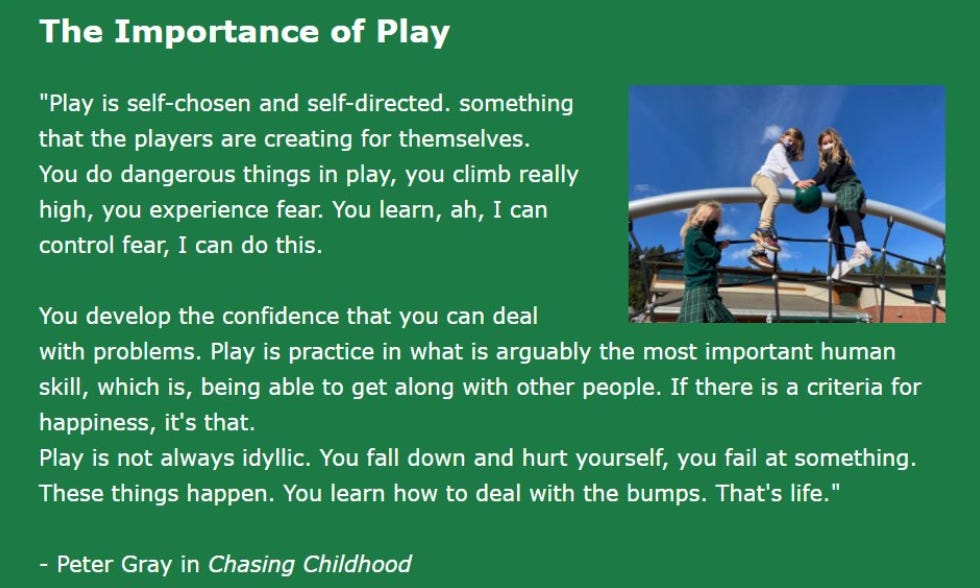Small Talks, No. 51
March 18, 2022
Dear Small Talker,
Welcome to the fifty first edition of Small Talks. Every Friday, I highlight 6 areas of weekly joys and reflections in early childhood and the whole family. Small Talks leverages my experience at the intersection of education, philanthropy, and impact investing. Enjoy!

What I’m celebrating -
“How the pandemic has shaped babies’ development” by Lydia Denworth, contributing editor for Scientific American, is an excellent piece connecting child development to how adults in are doing in their lives.
On a related note, if you are attending ASU GSV in San Diego in April, I will be moderating two panels, one on “how are our little learners doing?” with three remarkable researchers (Dani Dumitriu at Columbia, quoted in Lydia’s piece, Phil Fisher at Stanford, and Sean Deoni at Brown), and another one on “voice technology and childhood”. The first will be broadcast for those unable to attend the conference.
Goldman Sachs (yes, Goldman Sachs!) publishes a report on child care: Congress should “address deficiencies in the child care business model.”
I loved this feature by Mark Swartz for Early Learning Nation of The Wheels on the Bus, Save the Children’s mobile education & nutrition unit in rural areas.
I had shared the NPR story last week about this new hotline by Kindergartners. Sharing it again, because it is so good and who does not need a smile! Get a *pep toc* or laugh by dialing 707-998-8410.
What I’m listening to -
Great interview with Peter Gray by Kisha Reid for the DEY podcast on what is play and the benefits of play. His definition of play is an activity that has 5 elements: (1) self-chosen and self-directed; (2) motivated by means more than ends [does not have any goals]; (3) guided by mental rules; (4) includes a strong element of imagination; and (5) is conducted in an alert, active, but relatively non-stressed frame of mind.
What I’m reading -
The Voltage Effect - How to Make Good Ideas Great and Great Ideas Scale by John List demystifies the science of scaling, by analyzing the “Five Vital Signs” of scale. While not directly about education and learning, it is filled with practical advice to bring ideas to their full potential. Read excellent summary reflections by David Evans on The Voltage Effect (and Scale-Up Effect).
What I’m watching -
In this interesting session with Catherine Myers at Family & Home, Dr. Claudia Gold explains how even the best parents only have 30% ideal ‘serve & return’ interactions.
What I’m learning and exploring more deeply -
New study shows that mindfulness can benefit both pregnant women and their babies. “This is the next frontier - interventions that have positive effects on both mom and baby,” says Dr. Nicki Bush at UCSF.
I really appreciated those three pieces with different scholar perspectives on the future of education and learning:
“Possible futures: Toward a new grammar of schooling” by Jal Mehta at Harvard Graduate School of Education.
Companion response “The attractions of doing school” by David Labaree at Stanford Graduate School of Education.
Another take “From zero-sum to positive-sum” by Michael Horn.
“The Grown-ups Are Losing It” by journalist George Packer asks big questions about our education system: what for, how much, what kind? Sobering read.
“Two years ago schools shut down around the world. These are the biggest impacts” by Anya Kamenetz for NPR.
“Every company will be an edtech company” by Esteban Sosnik, General Partner at Reach Capital, is an interesting take on how employers are increasingly getting involved in education of their employees, as well as education of employees’s children (including child care) .
Quote I’m pondering -
Feedback is a gift. Which part above is your favorite? What did I miss? What do you want more or less of? Other recommendations? Please kindly let me know. Thank to all of you who are sending me amazing suggestions.
If you enjoy this newsletter, please help spread the word by sharing with your friends, colleagues, and networks.
Have a wonderful week. Please stay safe and care for each other.
Isabelle





I love the latest research you have included (although the complete newsletter is content rich)! Thanks for your work.